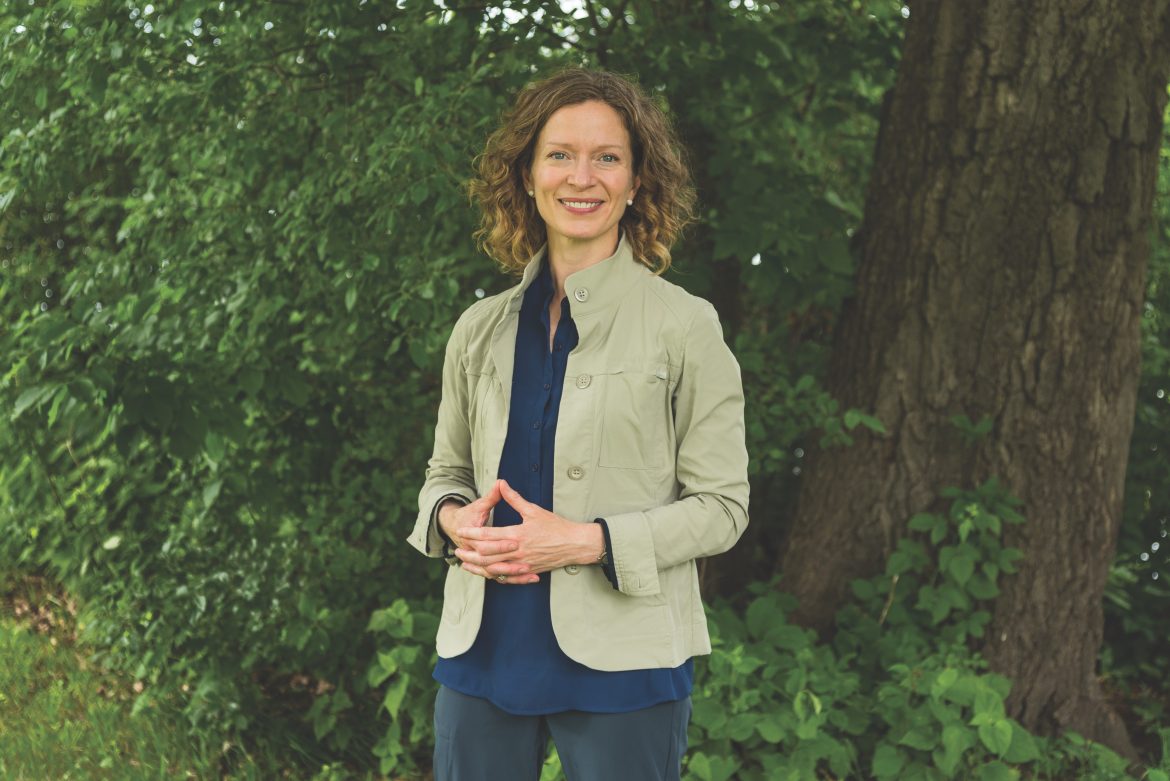By Julia Richards | Photo courtesy The Nature Conservancy, by Jim Schumaker
Every summer growing up Elizabeth Koehler went with her family to Plum Lake in Wisconsin’s Northwoods. In this magical place they would watch bald eagles landing in the tree tops and deer drinking from the water at the shoreline.
About 20 years ago the owner of the Plum Waters Resort, Marcia Kittleson, called Koehler in a panic because an adjacent property on Plum Lake, known as Warwick Woods, was going to be developed into a large campground, increasing boat traffic on the lake, among other impacts.
“Liz was on it,” Kittleson says. Koehler was annual giving officer at the Wisconsin chapter of The Nature Conservancy at the time. Kittleson, who was serving as chamber president of Sayner-Star Lake, knew that the previous owners of Warwick Woods had deeded the land to The Nature Conservancy—with the stipulation that it not be developed. When Koehler brought this provision to the attention of the current owner, the state department of natural resources, they withdrew their plans, and the woods have remained in their natural state.
“You hear the wolves over there—the coyotes,” Kittleson says.
“It makes me shiver to think that [as a child] I had never heard of The Nature Conservancy, as most people haven’t. But I grew up benefiting from those two people who had that vision for their property,” says Koehler of the two women owners who gave Warwick Woods to the Conservancy.
Last November Koehler took the helm as director of The Nature Conservancy in Wisconsin, where she works to protect more of our state’s natural areas for future generations. “We all benefit from those people who came before us, you know, and now is our time to do those same things,” she says.
This year The Nature Conservancy celebrates its 60th year in Wisconsin. They have grown from an all-volunteer organization to a membership of 20,000 households and a staff of 42. Protecting land and water is their top priority and they have protected more than 360 square miles in the state, working closely with local land trusts and the state DNR. Addressing climate change as one of our greatest environmental threats, is another main focus. In Wisconsin one of the primary impacts is flooding, so the Conservancy has created maps of existing wetlands to help identify where to restore or protect these key places, which can mitigate floodwaters. “We have examples of counties in Wisconsin that have more wetlands than others and those counties suffered less flooding in 2018 than the counties that have developed more of their wetlands or had not restored enough wetlands,” Koehler says. The Conservancy works through collaboration, Koehler emphasizes. For example, they connect private owners of wooded land with carbon markets in California and Canada so they can earn money for sustainably managing their forests, which sequester carbon. Another goal of the nonpartisan organization is to develop better ways to bring climate change into the public discourse. Despite being concerned about the issue “the majority of people don’t talk about climate change with anyone,” Koehler says. “So that’s a puzzle we have to solve. Because if we don’t talk about it, elected leaders aren’t going to feel confident to make the moves they need to.”
Making food more sustainable is another goal. They are working with five farmer-led groups to encourage practices like cover crops and no till farming, proven to keep algae-bloom-causing nutrients out of lakes and streams. The Conservancy can also serve as a bridge, Koehler says, between dairy farmers at one end of the supply chain and big retailers like Walmart on the other end, who want to offer consumers products that are produced sustainably. Retailers can tout that their Wisconsin dairy products come from farms managed responsibly with methods that keep nutrients out of waterways.
Besides working in farm country, The Nature Conservancy is in urban environments as well, helping cities be resilient in the face of climate change. They are striving to broaden the conservation community in terms of both age and race. Part of that is “making environmental justice and equitable conservation something that we first really know and understand, and then practice, so that as our work touches down we understand who it’s helping and who it might be possibly overlooking,” Koehler says.
The mission of the Conservancy—to protect the land and water on which all life depends—is certainly broad enough to include everyone, including the generations to come.
By the Numbers
How long The Nature Conservancy has been active in Wisconsin: 60 years
Membership: 20,000 households
Facebook followers: 30,000
Staff: 42
Land protected in Wisconsin: About 360 square miles.
Agricultural land the Conservancy is working with to improve sustainability: 200,000 acres (1% of farmland in Wisconsin.)




